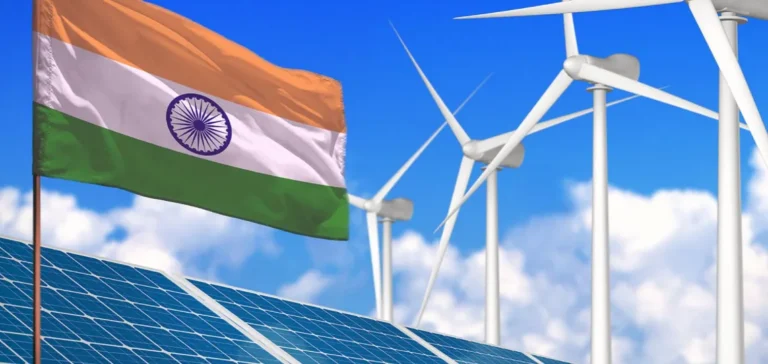India is at a turning point in the development of its renewable energy sector. While the country has rapidly increased its installed capacity, growing from 35 GW in 2014 to 197 GW as of September 2025, the current priority has shifted toward grid integration. This shift highlights the need to ensure renewable energy is available at key times, notably through combining solar projects with storage solutions.
Transition towards more reliable renewable energy
India added nearly 29 GW of capacity in 2024–25 and has already integrated an additional 25 GW in the first half of 2025–26, despite global economic pressures. However, the goal is no longer limited to expanding capacity—it is now to ensure stable and available power, particularly during peak hours. The country is turning to increasingly sophisticated projects such as solar-plus-storage systems, which provide maximum availability and are now preferred over hybrid wind-solar configurations.
Commercial and industrial players, attracted by more reliable energy solutions, are actively driving demand and accelerating the adoption of these new standards.
Contractual reforms and project security
One of the sector’s main challenges is the delay in signing Power Sale Agreements (PSAs) and Power Purchase Agreements (PPAs). By the end of September 2025, nearly 44,000 MW had been awarded through Letters of Award (LoAs) without associated PSAs. To address this issue, 24,928 MW have been contracted since April 2023, helping to reduce the gap between announced capacity and actual deployment.
The government is encouraging implementing agencies to reassess projects based on their feasibility and tariff competitiveness, with no plan for mass cancellations. A case-by-case review will be carried out before any decisions are made, thereby preserving developers’ investments already committed.
Market reforms to support the transition
To facilitate contracting and accelerate the process, several reforms are being introduced. These include urging states to comply with Renewable Consumption Obligations under the Energy Conservation Act. The government is also encouraging agencies to aggregate distribution company demand before launching tenders and to host regional workshops to resolve local issues.
Adjustments to bidding guidelines are also being made to allow the cancellation of LoAs that remain unsigned 12 months after issuance. These reforms aim to streamline the market, strengthen investor confidence, and enhance project bankability.
Transmission infrastructure and financial support
The target of reaching 500 GW of renewable capacity by 2030 is backed by a ₹2.4 lakh crore ($28.81bn) investment plan for transmission infrastructure. New transmission lines will connect high-potential renewable regions such as Rajasthan, Gujarat, Tamil Nadu and Karnataka.
Recent amendments to General Network Access rules, such as dynamic corridor sharing, aim to unlock underused capacity and improve renewable energy flow to high-demand areas.






















